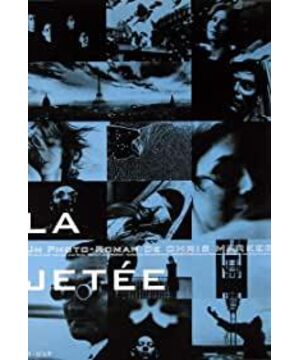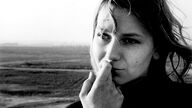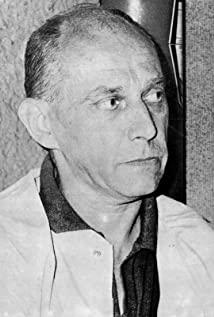It first obtains a rough photographic still image with a sculptural texture through a subject that is mostly presented in close-up, strong contrast of light and shadow, black and white tones, and even looming picture grains.
At the same time, it is the art of cutting rather than adding, replacing the flow of film in the usual sense with frozen photography, restoring it to its essence at twenty-four frames per second, but with the difference that these carefully shot Steady and self-contained, the still image is "the frozen sun, the sunset at the end of the viewing platform, and the face of a woman, always remembered." And if we restore a normal movie at 24 frames per second, we will get more waste movies, those moments of interception and separation are shaky, "Dike" removes these clutter, and let the audience imagine through the imagination-then This kind of viewing that is inherent and not just belonging to the eye can freely fill the gap between frames according to the needs of the self, and restore the possibility, extension, ambiguity and complexity in the process of restoring a stable frame to a stable frame, rather than just creating The solitary results provided by the author, and finally get just the right satisfaction.
Furthermore, when Chris Mark is narrating, reduce the use of fusion, the fusion is continuous, soft and tender, and the blank of this frame and frame can be clear and tough. But there is no doubt that this void is not and cannot be rigid, it still provides a direction, a direction of inevitable flow, and through a more direct narration (which can be seen as a kind of writing) Contributing to this flow, and ultimately to the signification of stills and stills, events and events, it is clear that we need meaning and cannot tolerate the fragmentation, isolation, and chaos of everyday life.
This makes cinema, if we may call it cinema, to acquire literary qualities based on photography. At the formal level, Dyke explores precisely the relationship between "photography-film-writing", which is also one of Chris Mark's lifelong themes, and it is undoubtedly this that he wants to seek. balance of the three. As for its real intention, it is to explore the most appropriate or real means to recognize, represent and reproduce the external world and objects, to explore the truth, and of course to indirectly explore the question of how we construct ourselves. And we live more in time than space, that is to say, "Dike" finally points to time, more precisely, to memory, "Humanity is doomed to perish, space has no way, the only hope is to survive It's time. Through a hole in time, maybe food, medicine, energy." Further, for me, it is the past that makes me who I am, not the future that makes me who I am, I am the product of the historical process, always For "an impression from the past", "he wants to go back to the world of his childhood more than the beautiful future world, that woman may still be waiting for him." Therefore, my life is a figurative form of time and memory Therefore, the problem that "Dike" tries to solve focuses on one point, that is, how to express it, and it also reaches its original intention through "photography-film-writing".
Dyke offers an unfolding, never-ending present, but more importantly, it shows memory, "Memories are no different from ordinary moments, only when those moments leave scars can you truly remember. Live them.” And memory reappears first as a moment, a frozen scene, when it arrives at photography, but then when memory flows—it has to flow, in the form of space to become time, photography becomes Abandoned, when we try to hover with photography/painting instead of extending time (more often pointing to past memories), the shortcomings of photography are fully revealed, it lacks the power of duration, a moment is just a moment, And the too many moments it retains show more frivolity and frailty.
When Chris Mark realized that what photography should present should be the sum of moments, that it should last at least as long as it can hold memories, he found a more convenient way - video, "movie is still an image art", "through the In the intermediary, I write with pictures to give my own ideology a real power." (Cocteau, Diary of a Stranger) And it, like memory, is at first a painting or a photograph, an image art, and then they start to flow. Yet this flow—movie in the usual sense—does not reproduce the trajectory of memory, or even how we perceive the outside world. The clever thing about Chris Mark is that he makes the flow go on in a static way - what he needs is still only moments, but these moments have gained power that has not yet been released, and after solidification, flow occurs Propensity.
And this "solidified flow" also led Chris Mark to writing. Writing is actually a painting of words, which stares at the story frame by frame. "Fiction is like a painting showing a moment of freezing, but it It will not contain only one such tiny, indivisible moment, there will be thousands of them." "If painting presents us with a moment of solidification, fiction presents us with thousands, One after the other freezing moments." (Pamuk, naive and sentimental novelist). So far, "photography-film-writing" has been fused and balanced by Chris Mark, and this hovering and flowing is exactly how we store and process memory and time, and undoubtedly, also The way we frame and stare at ourselves -
"He ran to her. . . . He realized there was no way to escape time, and the moment he was meant to see as a child, the moment that haunted him, was the end of his own life. time."
View more about La Jetée reviews








